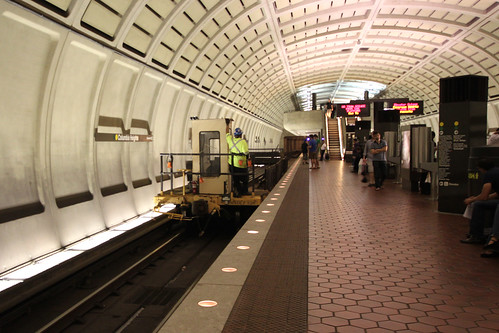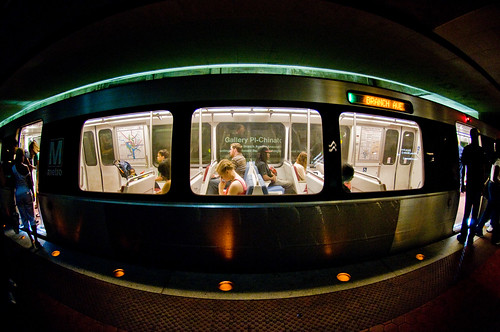(Source: Transit Wire & Progressive Railroading)
Amidst the flurry of negative publicity surrounding Washington, DC’s Metro rail system, there was some good news shining like a lone star in the dark sky! Metrorail passengers will soon be able to go online while underground. Four major cell phone providers have started to install the hardware that will enable riders to make calls, surf the Web, or send text messages from many of the Washington (DC) Metropolitan Area Transit Authority’s busiest stations starting in October.

Verizon Wireless, Sprint Nextel, AT&T and T-Mobile recently began installing hardware at the 20 below-ground stations and expect to complete work by Oct. 16. According to the WMATA press release, during the next two months, the companies will install a wireless network at the following Metrorail stations: Ballston, Bethesda, Columbia Heights, Crystal City, Dupont Circle, Farragut North, Farragut West, Federal Triangle, Foggy Bottom-GWU, Friendship Heights, Gallery Pl-Chinatown, Judiciary Square, L’Enfant Plaza, McPherson Square, Metro Center, Pentagon, Pentagon City, Rosslyn, Smithsonian and Union Station.
The companies will build, operate, maintain and own the new wireless network, as well as establish a second wireless network that WMATA will own, operate and maintain. The wireless contract will generate a minimum of $25 million during the initial 15-year term and an additional $27 million during renewal terms, according to the transit agency.
Customers at those stations will begin to see large, cabinet-like enclosures that will house the hardware at the ends of station platforms or on mezzanines, in areas that will not impede the flow of customers or impact the safe operation of the Metrorail system. New cables and antennae also will be installed as part of this work, which will take place late at night when the Metrorail system is closed.
“This is the first phase of Metro’s effort to bring expanded cell phone carrier service to the entire Metrorail system by 2012,” said Suzanne Peck, Metro’s Chief Information Officer. “After we complete the first 20 stations this fall, the carriers will install service at the remaining 27 underground stations by the fall of 2010. Customers will be able to use these carrier-provided wireless services in tunnels between stations by October 2012.”
Riders can now receive cell phone service from multiple providers at above ground stations, but the current underground wireless network only supports Verizon customers and Sprint phones that roam onto the Verizon network. In 1993, Metro agreed to allow Bell Atlantic Mobile Systems, which later became Verizon Wireless, to build and maintain the current wireless network. In exchange, Verizon built a public safety radio communications system for Metro. Verizon also pays annual fees to Metro.
“Customers have been asking for expanded cell phone and Internet access in the Metrorail system for a long time,” said Metro General Manager John Catoe. And now they are finally getting what they pleaded, fought and begged for years!







